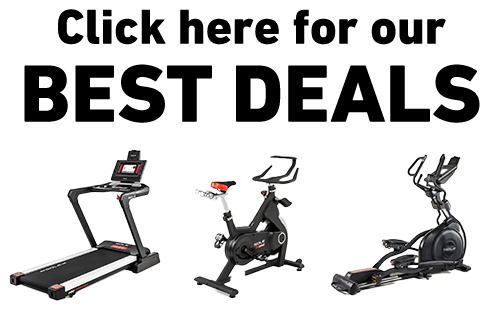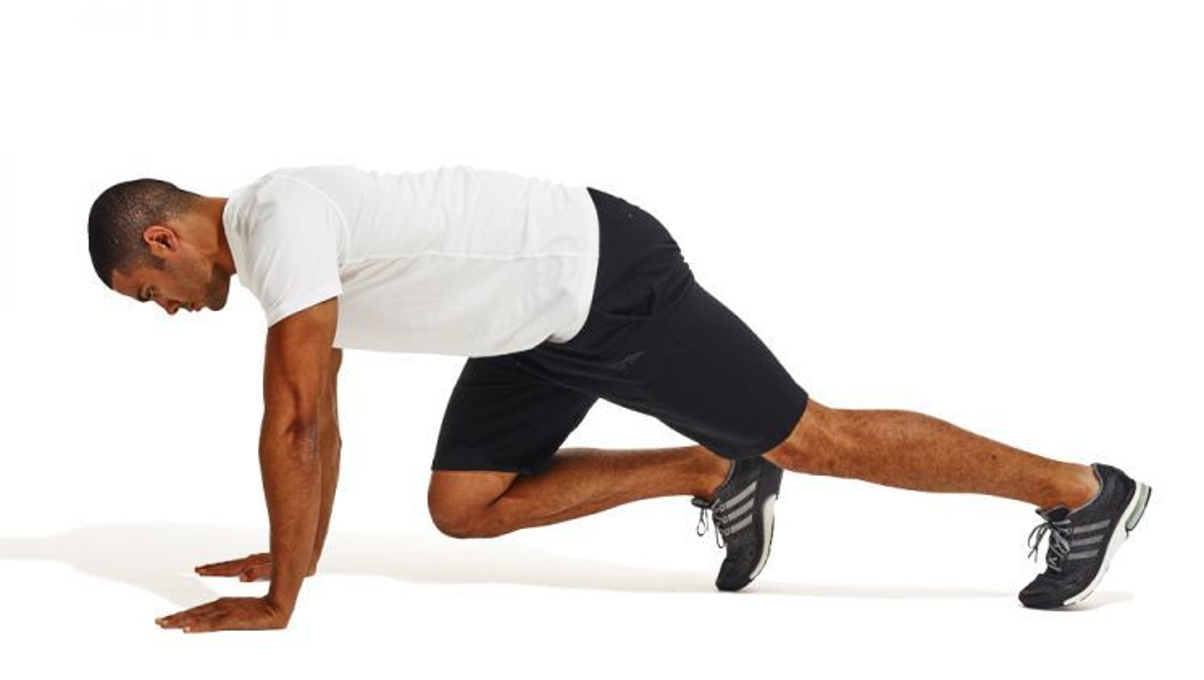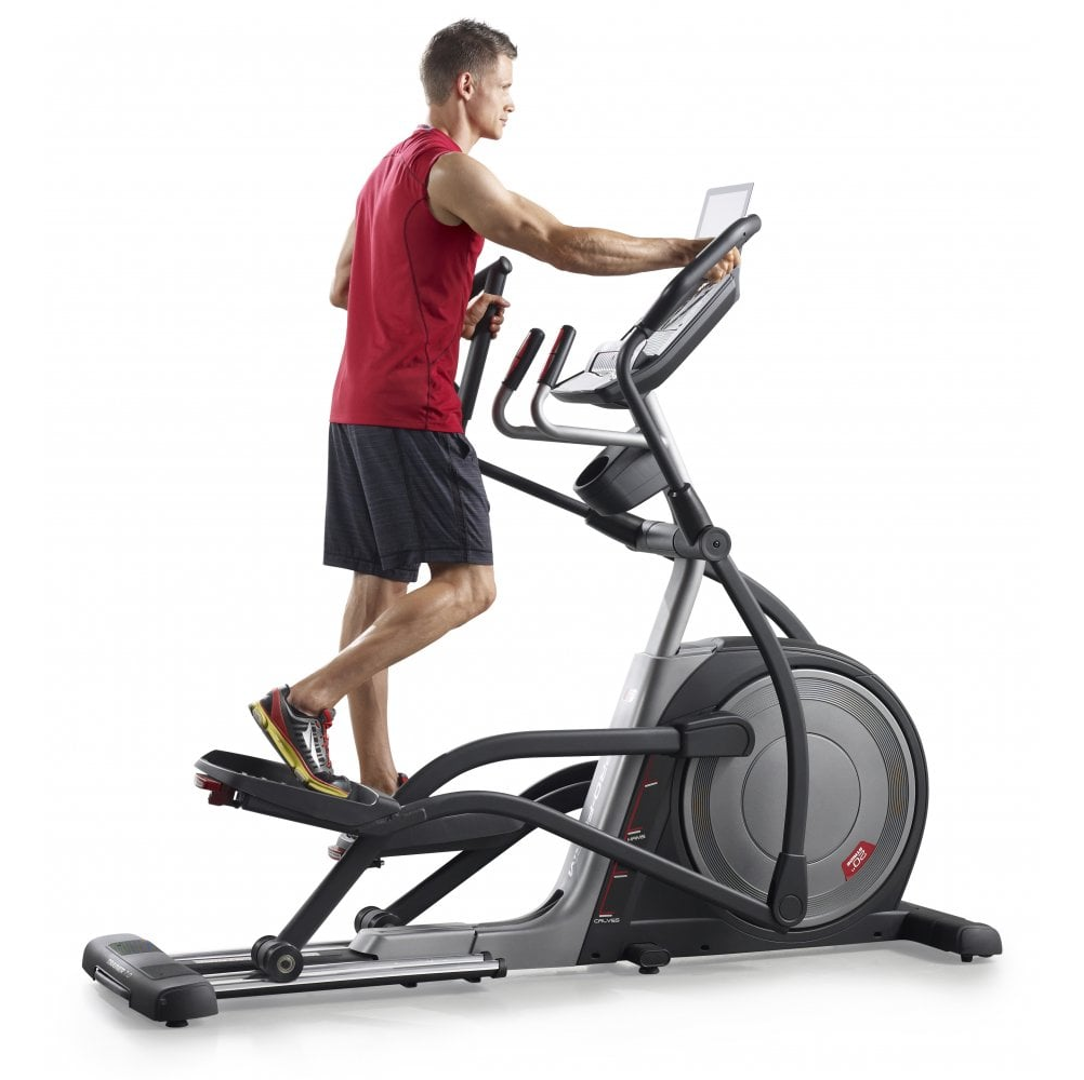Key Takeaways
- Mountain climbers deliver solid cardio benefits by elevating heart rate quickly and engaging multiple muscle groups.
- This dynamic exercise burns 8–12 calories per minute with after-burn effects lasting up to 48 hours.
- Just 2–3 times weekly can significantly improve heart health and endurance.
- SOLE equipment creates the perfect ecosystem for mountain climber HIIT workouts—warm up on treadmills or ellipticals, then transition to the equipment mat for explosive intervals.
How Mountain Climbers Boost Your Heart Rate & Burn Calories
The moment you begin mountain climbers, your heart rate immediately elevates as your body works to supply oxygen to multiple muscle groups. This rapid increase creates a "cardiovascular demand spike."
It’s a quick, significant increase in your body's need for oxygen. Your heart responds by pumping faster and more forcefully, strengthening your cardiac muscle with each repetition.
The Science Behind the Cardio Benefits
Mountain climbers work through "peripheral heart action training," forcing blood to shuttle quickly between your upper and lower body.
As you alternate driving knees toward your chest, blood flows rapidly between your legs and torso, improving your heart's efficiency and your body's oxygen transport ability.
Calorie-Burning Potential
Based on intensity and body weight, mountain climbers burn approximately 8–12 calories per minute. Beyond immediate calorie burn, they create an after-burn effect (EPOC which stands for Excess Post-Exercise Oxygen Consumption).
This means you continue burning extra calories for hours after finishing your workout.
HIIT vs. Steady-State Applications
Mountain climbers excel in HIIT protocols. Performing them in intervals (e.g., 20 seconds of work followed by 10 seconds of rest) improves both aerobic and anaerobic fitness simultaneously.
This dual-training effect is difficult to achieve with steady-state cardio alone. They work equally well as standalone cardio sessions or as components within larger circuits.
|
At SOLE, we're proud to offer top-quality exercise equipment designed for home and gym use. Our machines are built to meet the highest standards of durability and performance, making them ideal for fitness enthusiasts at any level. SOLE Products
|
5 Major Cardiovascular Benefits
The cardiovascular benefits of mountain climbers extend far beyond simply raising your heart rate. This dynamic exercise creates lasting physiological changes that improve your overall heart health and fitness capacity. (Image courtesy of Muscu Street et Crossfit)
1. Improves Heart Health & Endurance
Regular mountain climber sessions strengthen your heart muscle, allowing it to pump more blood with each contraction. This improved cardiac output means your heart works more efficiently during both exercise and rest.
2. Boosts Metabolic Rate
The high-intensity nature triggers metabolic boost lasting up to 48 hours. Research shows post-exercise calorie burn can account for an additional 6–15% of total calories expended during your workout.
3. Enhances Oxygen Utilization
Mountain climbers improve VO2 max, which is the maximum oxygen your body can use during intense exercise. A study found that both elite mountain and rock climbers demonstrated high aerobic performance with an average VO2 max of 64 ml/kg/min, though mountain climbers showed better endurance performance compared to rock climbers.
4. Reduces Blood Pressure
The rhythmic nature creates beneficial pressure waves through your arterial system, maintaining vessel elasticity. Regular practice (of any exercise actually) leads to lower resting blood pressure and reduced arterial stiffness within 4–6 weeks.
5. Decreases Cardiovascular Disease Risk
According to American Heart Association research, regular physical exercises like mountain climbers can reduce heart disease risk by up to 30% in previously sedentary adults by improving multiple health markers simultaneously.
Beyond Cardio: Additional Benefits
When you add mountain climbers to your routine, you're essentially getting a total-body workout in a single movement. (Image courtesy of Hinge Health)
Core Strength & Stability
Your entire core works to stabilize your spine throughout the movement, building functional strength that improves posture and reduces back pain. Unlike isolated exercises, mountain climbers train your core as an integrated unit while building both strength and endurance.
Upper Body Development
The plank position creates significant demand on shoulders, chest, and triceps. Your shoulders must stabilize body weight while resisting rotational forces, developing functional strength that carries over to everyday activities.
Lower Body Power
Each repetition requires coordinated action from hip flexors, quadriceps, hamstrings, and calves, improving neuromuscular coordination while building lower body strength and power.
Perfect Your Mountain Climber Form
Step-by-Step Technique
- Start in high plank position with hands shoulder-width apart
- Engage core and keep back straight
- Drive right knee toward chest
- Quickly switch, extending right leg back while bringing left knee forward
- Continue alternating at controlled pace
- Keep shoulders stable over hands throughout
Common Form Mistakes
- Hips too high: Keep your hips aligned with your shoulders and heels to maintain proper plank position throughout the movement.
- Moving too fast: Start with slow, controlled movements and gradually build speed while maintaining complete control of the motion.
- Shoulders elevated: Keep your shoulders down and away from your ears to prevent unnecessary tension and maintain proper alignment.
- Bouncing movements: Focus on controlled, deliberate motion rather than bouncing or using momentum to complete the exercise.
Breathing Patterns
Exhale as you drive each knee forward, inhale during transitions. Focus on deeper belly breaths rather than shallow chest breathing to fully oxygenate your body and enhance cardiovascular benefits.
Mountain Climber Variations by Fitness Level
Beginner Modifications
- Elevated Mountain Climbers: Hands on bench reduces upper body load
- Slow Motion: Deliberate pace focusing on form over speed
- Standing Mountain Climbers: Eliminates plank position while working similar muscles
Intermediate Challenges
- Cross-Body Mountain Climbers: Drive knee toward opposite elbow for oblique engagement
- Mountain Climber Holds: Hold each knee at chest for 2–3 seconds
- Wide-Stance: Start with feet wider than hip-width for inner thigh engagement
Advanced Variations
- Spider Mountain Climbers: Bring knee to outside of same-side elbow
- Mountain Climber Burpees: 4 mountain climbers followed by burpee
- Sliding Mountain Climbers: Use sliders for constant tension
3 Effective Mountain Climber Workout Routines
1. The 10-Minute Cardio Blast
- Warm up: 1 minute marching in place
- Round 1: 30 seconds work, 30 seconds rest
- Round 2: 40 seconds work, 20 seconds rest
- Round 3: 50 seconds work, 10 seconds rest
- Round 4: 40 seconds work, 20 seconds rest
- Round 5: 30 seconds work, 30 seconds rest
- Cool down: 2 minutes walking and stretching
2. 20-Minute Full Body HIIT
Circuit (repeat 4 times):
- 45 seconds mountain climbers
- 15 seconds rest
- 45 seconds squats
- 15 seconds rest
- 45 seconds push-ups
- 15 seconds rest
- 45 seconds jumping jacks
- 45 seconds rest between circuits
3. 30-Day Progressive Challenge
- Days 1-10: 20-second sets, 40 seconds rest, repeat 3–5 times
- Days 11-20: 30-second sets, 30 seconds rest, repeat 4–6 times
- Days 21-30: 40-second sets, 20 seconds rest, repeat 5–8 times
Track heart rate recovery between sets to measure improvement. Film yourself on days 1, 15, and 30 to observe technique and speed gains. (Image courtesy of Mint)
Incorporating Mountain Climbers Into Your Routine
As a Warm-Up
Use 3 sets of 20 seconds with 10-second breaks before your main workout. This activates your cardiovascular system while preparing joints and muscles for intense activity.
Within Circuit Training
Place mountain climbers between strength exercises to maintain elevated heart rates while providing active recovery. For example:
- Strength-Cardio Blend: 45 seconds strength, 15 seconds mountain climbers
- Tabata-Style: 20 seconds mountain climbers, 10 seconds rest, alternating with strength moves
- EMOM: Perform strength exercise, then mountain climbers for remaining time
As Standalone Cardio
Try pyramid format: 20 seconds work/10 seconds rest, building to 60 seconds/30 seconds, then back down. This 10–15 minute session delivers cardiovascular benefits comparable to longer steady-state cardio.
With Strength Training
Add 5-minute mountain climber finishers on strength days. Try 30 seconds after each major lift or save for metabolic boost at session end.
Maximize Your Mountain Climber Cardio with SOLE
SOLE equipment transforms mountain climbers from a simple floor exercise into a comprehensive cardio system that rivals any gym's HIIT zone.
Mountain climbers are cardio gold, but pairing them with the right equipment takes your results to the next level. SOLE creates the perfect environment for maximizing those heart-pumping benefits.
Start with a proper warm-up on SOLE cardio machines. The TT8, F63, F89, and F80 treadmills have Cushion Flex Whisper Deck technology that reduces impact by 40%, perfect for a 5-minute jog to prep your cardiovascular system.
Or try the SOLE ellipticals like the E95 or the E98 with their smooth, natural motion that gets your heart rate climbing without stressing joints before your intense mountain climber intervals.
The SOLE Equipment Mat is your mountain climber headquarters. Its 36.5" x 78" surface gives you room to move explosively without worrying about slipping off the edge. The non-slip technology keeps you stable during those rapid knee drives, while the cushioning protects your wrists during extended HIIT sessions. When you're pushing for that 48-hour afterburn effect, comfort matters.
For active recovery between mountain climber sets, the SOLE SR500 Rower maintains your elevated heart rate while giving your hip flexors a break. This strategic approach prevents burnout while keeping you in the optimal fat-burning zone throughout your entire workout.
The SOLE app takes the guesswork out of your workout routine. Access HIIT workouts that strategically combine equipment-based cardio with mountain climber intervals. You'll learn optimal work-to-rest ratios for your fitness level and how to progress safely toward those advanced 40-second bursts.
Frequently Asked Questions (FAQ)
How many mountain climbers should I do for effective cardio?
Aim for 2–4 minutes total, broken into 20–40 second intervals with equal or shorter rest periods. Beginners start with 15–20 second sets (10–15 reps), doing 4–5 sets with 30–45 seconds rest. Progress to longer intervals with less rest as fitness improves.
Can mountain climbers replace my regular cardio completely?
Yes, when used in varied interval formats. Their high-intensity nature often delivers comparable benefits to longer traditional sessions. Use mountain climbers 2–3 days weekly as a cardio base, adding different movement patterns 1–2 days for balanced development.
Will mountain climbers help lose belly fat?
Mountain climbers excel at creating hormonal environments conducive to overall fat loss through high calorie burn and metabolic boost. While specific spot reduction is impossible, combining mountain climbers with proper nutrition and calorie deficit effectively reduces overall body fat, including abdominal area.
Are mountain climbers safe for knee problems?
Standard variations may aggravate some knee conditions, but modifications exist. Try slow-motion, standing, or elevated versions. Focus on soft landings with midfoot contact. Many with mild issues can progress to standard form after building supporting muscle strength.
How can SOLE equipment enhance my mountain climber cardio workouts?
SOLE equipment creates a cardio sandwich around your mountain climbers for maximum effectiveness.
Start with 5 minutes on a SOLE treadmill or SOLE elliptical to gradually raise your heart rate and warm up your muscles. This prepares your cardiovascular system for the intense work ahead. Then hit the SOLE Equipment Mat for your mountain climber intervals. The cushioning is crucial for longer sessions because wrist fatigue often limits people before their cardio gives out.
Between rounds, hop on the SOLE rower or SOLE bike for active recovery that keeps your heart rate elevated without exhausting the same muscle groups. This approach burns way more calories than just doing mountain climbers alone because you maintain that elevated heart rate throughout the entire workout.




Leave a comment
This site is protected by hCaptcha and the hCaptcha Privacy Policy and Terms of Service apply.